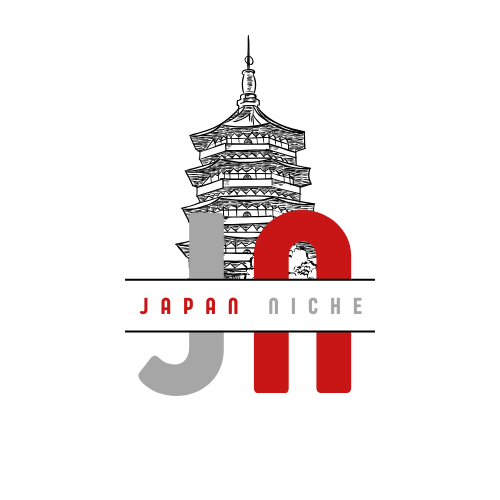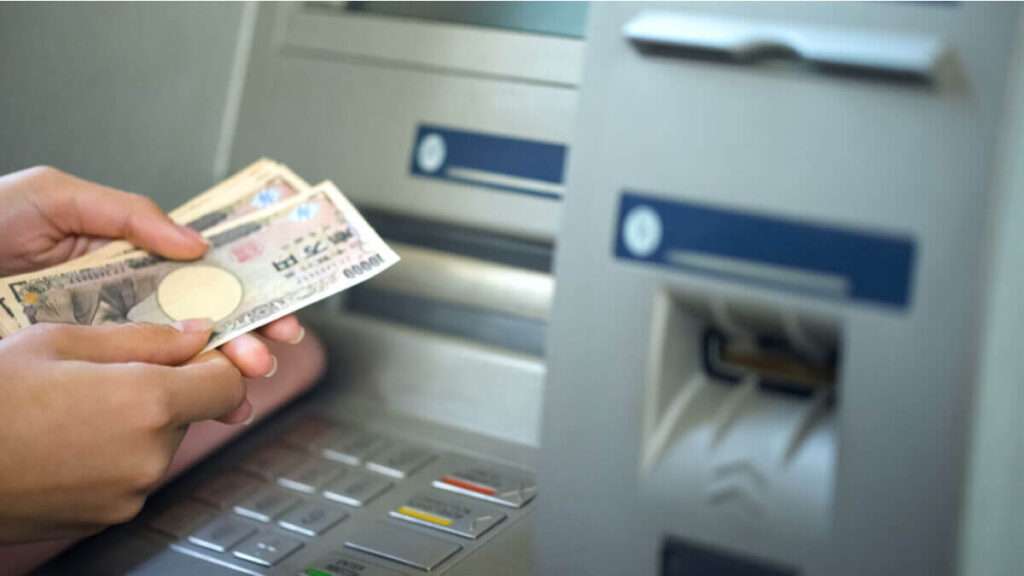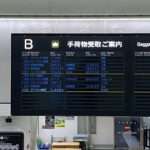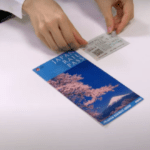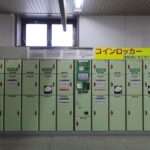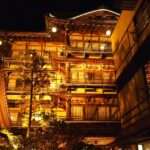When planning a trip to Japan, one of the most common concerns for travelers is the cost. Japan is often considered one of the world’s most expensive destinations, but is that reputation truly deserved? The answer isn’t as straightforward as it may seem. Japan can be both affordable and expensive depending on how you choose to travel. Whether you’re a backpacker, a mid-range traveler, or someone looking for a luxurious experience, Japan offers options for every budget.
In this blog, I’ll try to break down the costs of traveling in Japan, exploring everything from accommodations and transportation to food and activities. By the end, you’ll have a clear understanding of what to expect and how to manage your expenses while enjoying everything this incredible country has to offer.
Table of Contents
- Understanding the Cost of Traveling in Japan
- Accommodation Costs
- Transportation Costs
- Food & Dining Costs
- Sightseeing & Activities
- Shopping & Souvenirs
- Budget Travel Tips for Japan
- Is Japan Expensive Compared to Other Countries?
- Final Thoughts
1. Understanding the Cost of Traveling in Japan
Japan has a reputation for being expensive, particularly among tourists who compare it to other popular destinations in Asia like Thailand or Vietnam. However, when compared to Western cities like New York, London, or Paris, Japan can be quite reasonable in terms of costs. It’s all about knowing where to save and where to spend.
On the surface, Japan’s major cities like Tokyo, Kyoto, and Osaka can seem pricey, but there are plenty of ways to keep your budget under control. Costs can vary significantly depending on the season, your style of travel, and the types of activities you plan to enjoy.
Here are a few things to keep in mind when planning your trip:
- Seasonal Costs: Traveling during peak seasons, like cherry blossom season in spring (March to April) or during autumn (October to November), can drive up prices for hotels and flights. Off-season travel can offer significant savings.
- Urban vs. Rural: Major cities tend to be more expensive, while smaller towns and rural areas often offer cheaper accommodations and dining options.
- Luxury vs. Budget: Japan offers a range of options for every type of traveler. You can stay in luxury hotels or opt for capsule hotels, eat in Michelin-starred restaurants or grab a meal at a convenience store.
2. Accommodation Costs
Accommodation is typically one of the largest expenses when traveling, and Japan offers a broad range of options. Prices will vary significantly depending on the type of accommodation you choose, the location, and the time of year.
Types of Accommodation:
- Hotels: In major cities like Tokyo, Kyoto, and Osaka, standard hotel rooms can range from $80 to $300 per night for mid-range hotels. Luxury hotels can go upwards of $500 per night, particularly in central areas or famous landmarks.
- Ryokan: A traditional Japanese inn, called a ryokan, offers a unique cultural experience. Staying in a ryokan can range from $100 to over $400 per night, depending on the level of luxury and whether meals (such as a kaiseki dinner) are included.
- Hostels and Capsule Hotels: Budget travelers will find that Japan offers excellent hostels and capsule hotels, with prices starting around $20 to $50 per night. These are typically clean, well-maintained, and located near public transportation hubs.
- Airbnb: Airbnb has become increasingly popular in Japan, offering a wide variety of accommodations, from traditional homes to modern apartments. Prices can range from $50 to $200 per night, depending on location and amenities.
- Business Hotels: These budget hotels are a great option for solo travelers or businesspeople. Rooms are usually small and functional but clean, with prices typically ranging from $50 to $100 per night.
How to Save on Accommodation:
- Book Early: Japan’s most popular tourist destinations fill up quickly, especially during peak travel times, so booking accommodations well in advance can help you get better rates.
- Stay Outside City Centers: Accommodations in areas slightly away from central districts or tourist hotspots tend to be cheaper while still providing good access to public transportation.
- Capsule Hotels: If you’re comfortable with smaller spaces, capsule hotels can be a great way to save money while experiencing a uniquely Japanese concept.
3. Transportation Costs
Japan is renowned for its efficient, reliable, and high-speed public transportation, but it can also be a significant part of your travel budget. The country’s extensive network of trains, buses, and subways makes getting around easy, but prices can add up if you’re not careful.
Types of Transportation:
- Japan Rail Pass (JR Pass): For foreign tourists, the JR Pass is one of the best ways to save money on long-distance travel. This pass allows unlimited travel on Japan’s extensive JR train network, including the famous Shinkansen (bullet trains). Prices for a 7-day pass start at about $250, and there are also 14-day and 21-day options. While it may seem expensive at first glance, the JR Pass quickly pays for itself if you’re traveling between major cities.
- Shinkansen (Bullet Train): If you’re not using a JR Pass, expect to pay around $130 for a one-way trip from Tokyo to Kyoto on the Shinkansen. It’s fast and convenient but can be costly without a pass.
- Local Trains and Subways: Public transportation within cities like Tokyo and Osaka is affordable, with rides typically costing between $1 and $3 depending on the distance. A Suica or Pasmo card (rechargeable travel cards) can make this even easier by eliminating the need to buy individual tickets.
- Buses: Intercity buses are a much cheaper alternative to trains, especially for long distances. A bus from Tokyo to Kyoto might cost around $40 to $60, though the journey will take longer.
- Taxis: Taxis in Japan are known for being clean and safe, but they can be expensive. The base fare starts around $6, and costs increase quickly. Taxis are best reserved for short trips or when public transport isn’t available.
How to Save on Transportation:
- JR Pass: If you plan to travel between multiple cities, investing in a JR Pass can save you a lot of money.
- Bus Travel: For long-distance trips, consider taking an overnight bus, which is significantly cheaper than the Shinkansen.
- Walk or Rent a Bicycle: Many cities in Japan, including Kyoto and Nara, are very walkable or bike-friendly, which can help cut down on transport costs while also offering a more intimate way to explore.
4. Food & Dining Costs
Food is one of the highlights of any trip to Japan, and fortunately, eating well in Japan doesn’t have to break the bank. From convenience store meals to fine dining, the country offers an incredible variety of options.
Types of Dining:
- Convenience Store Meals: Japanese convenience stores (7-Eleven, Lawson, FamilyMart) offer surprisingly good and inexpensive meals, ranging from $3 to $6. You’ll find everything from bento boxes and onigiri (rice balls) to sandwiches and fried chicken.
- Ramen and Udon Shops: A meal at a local ramen or udon shop will typically cost between $5 and $10. These are great for a quick, filling, and affordable meal.
- Izakaya (Japanese Pubs): Dining at an izakaya can range from $15 to $30 per person, depending on how much you eat and drink. These pubs offer small plates of food (like tapas) and are great for trying a variety of dishes.
- Sushi: Sushi can range from very affordable to very expensive. Conveyor belt sushi (kaitenzushi) restaurants often charge as little as $1 to $3 per plate, making it an inexpensive way to enjoy fresh sushi. High-end sushi restaurants, especially in cities like Tokyo, can cost over $100 per person.
- Kaiseki: Kaiseki is a traditional multi-course meal often served at high-end restaurants or ryokan. Prices for kaiseki start around $50 and can go up to several hundred dollars, depending on the establishment.
- Street Food: In areas like Osaka and Tokyo, you’ll find plenty of street food options, such as takoyaki (octopus balls), yakitori (grilled chicken skewers), and taiyaki (fish-shaped pastry). These snacks usually cost between $2 and $5 each.
How to Save on Food:
- Convenience Stores: Don’t underestimate Japan’s convenience stores; you can find high-quality, cheap meals that are perfect for travelers on a budget.
- Lunch Deals: Many restaurants offer “lunch sets,” which are significantly cheaper than dinner. You can enjoy a full meal, including a drink and dessert, for as little as $10 to $15.
- Eat at Supermarkets: Many supermarkets sell freshly made bento boxes, sushi, and other meals that are priced lower than in restaurants, especially in the evening when they discount items.
5. Sightseeing & Activities
The cost of sightseeing and activities in Japan varies widely depending on your interests. Many cultural and historical sites are free or have minimal entry fees, but certain experiences—like theme parks or guided tours—can be more expensive.
Types of Activities:
- Temples and Shrines: Many temples and shrines, such as Fushimi Inari in Kyoto or Meiji Shrine in Tokyo, are free to enter. However, some famous ones, like Kinkaku-
ji (the Golden Pavilion) in Kyoto, may charge an entry fee of around $3 to $5.
- Museums: Admission to most museums ranges from $5 to $15, though some may have special exhibitions that cost more.
- Theme Parks: Japan’s theme parks, such as Tokyo Disneyland or Universal Studios Japan, are more expensive, with entry fees typically around $60 to $80 per person for a day pass.
- Onsen (Hot Springs): Public baths and onsen can range from $5 to $20 depending on the location. Private or luxury onsen experiences, especially in ryokan, can be significantly more expensive.
- Nature and Hiking: Japan is rich in natural beauty, and many hiking trails, parks, and scenic spots are free to enjoy. Mount Fuji, for example, is free to visit, though climbing during the summer season may involve some minor costs for permits or transportation.
How to Save on Sightseeing:
- Free Attractions: Take advantage of Japan’s many free attractions, such as temples, parks, and walking tours.
- Discount Passes: Some cities offer discount passes that provide unlimited access to public transportation and discounted entry to major attractions. For example, the Osaka Amazing Pass offers free entry to 40 attractions for around $25 per day.
- Plan for Off-Peak Hours: Visiting museums or attractions early or late in the day may offer discounts or less crowded experiences.
6. Shopping & Souvenirs
Shopping in Japan can range from affordable trinkets to high-end designer goods. Popular souvenirs include traditional items like chopsticks, fans, tea sets, and kimono, as well as anime merchandise, electronics, and Japanese snacks.
Costs of Shopping:
- Souvenirs: Traditional souvenirs like ceramics, paper fans, or chopsticks can be found for $5 to $20, while higher-quality items such as yukata or sake sets may cost upwards of $50.
- Electronics: Japan is famous for its high-tech gadgets, and places like Akihabara in Tokyo are hotspots for buying electronics. Prices are generally comparable to other countries but may be lower for certain items.
- Clothing: Japanese fashion ranges from affordable brands like Uniqlo and GU to high-end boutiques in districts like Ginza. Expect to pay $20 to $50 for casual clothes and much more for designer items.
How to Save on Shopping:
- 100 Yen Shops: Similar to dollar stores, 100 yen shops (like Daiso) offer a wide range of affordable goods, from snacks and stationery to home goods and small souvenirs.
- Tax-Free Shopping: Tourists can take advantage of tax-free shopping in many stores, especially for purchases over 5,000 yen (around $35). Be sure to bring your passport for the tax refund process.
- Avoid Tourist Traps: Souvenirs in tourist-heavy areas tend to be marked up. You can often find better deals by shopping in local markets or lesser-known neighborhoods.
7. Budget Travel Tips for Japan
Japan doesn’t have to be expensive if you plan your trip carefully. Here are some practical tips to help you stretch your budget:
- Travel Off-Peak: Avoid traveling during high seasons like cherry blossom season or Golden Week when prices for flights and accommodations skyrocket.
- Use Discount Passes: Many cities offer passes for unlimited public transportation and discounted entry to attractions.
- Eat Like a Local: Convenience stores, supermarkets, and local food stalls offer delicious and affordable meals.
- Book Accommodations in Advance: Prices tend to rise closer to the date, especially in popular tourist cities.
- Walk or Bike: Exploring cities on foot or by bicycle is not only budget-friendly but also allows you to discover hidden gems.
8. Is Japan Expensive Compared to Other Countries?
When compared to other countries, Japan is often considered more expensive than Southeast Asian nations like Thailand or Vietnam, but it can be more affordable than major cities in Western Europe or North America. While certain aspects like transportation and accommodation can be pricey, Japan also offers plenty of ways to save, making it a destination that can cater to all types of travelers.
For backpackers, Japan may require a bit more budgeting, but it is absolutely possible to experience the country on a limited budget. For those who want to splurge, Japan offers world-class luxury in everything from dining to accommodations.
9. Final Thoughts
So, is Japan expensive to travel? The answer depends on how you choose to travel. Japan offers a wide range of experiences for every budget, and with careful planning, you can tailor your trip to suit your financial situation. By taking advantage of budget-friendly options like capsule hotels, convenience store meals, and public transportation, Japan can be surprisingly affordable. Conversely, if you want to indulge in luxury, Japan has no shortage of high-end experiences.
Ultimately, Japan is a destination that offers incredible value for every dollar spent, thanks to its rich cultural experiences, delicious food, and efficient public transport. Whether you’re a budget traveler or someone looking to splurge, Japan is a destination worth visiting.

